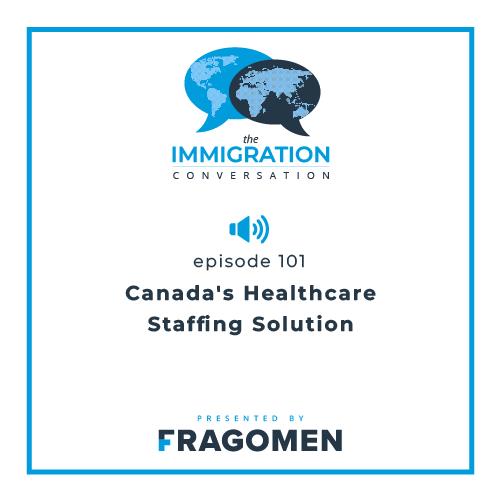
Country / Territory
Related contacts
Related offices
Related contacts
Related insights
Related offices
Related contacts
Related insights
Related offices
By: Shoaib Khaleeli
In the final part of this blog series on Emiratisation, Immigration Manager Shoaib Khaleeli explores the impact of Emiratisation-related non-compliance and how employers can prioritise preparing to remain compliant.
Impacts of non-compliance
In the event companies have not been able to comply to the rules and requirements, as a first step they may be notified by the relevant authority through an email or other communication channel. Further notices will be sent on the 3rd, 10th and 17th days after the due date.
Some companies have already started receiving these notices. It is important to proactively be aware of your Emiratisation Ratio in order to not fall into non-compliance, and waiting for the notification is not a recommended course of action.
Primarily, the authorities are using a combination of financial contribution (penalty) and administrative restrictions to drive compliance. For those companies not hiring appropriate levels of UAE Nationals, there is a specific financial contribution required to the authorities.

In the first year, the applicable contribution amount is 6,000 AED per month. This applicable contribution amount is set to increase with every year by 1000 AED, thus, by the end of year 5, the total applicable contribution per UAE national would be 10,000 AED a month.
As mentioned in a previous instalment of this series, from 2023 onward, the Emiratisation Ratio will be calculated monthly. Therefore, for each month that the company does not meet the Emiratisation requirement, a monthly contribution of 6,000 AED per UAE national not hired will be calculated.
The contribution formula to calculate the total contribution owed to the MOHRE authorities can be described as:

Using an example of a company with 50 skilled employees, the company should have hired one Emirati in the first year. Therefore, the total contribution in the first year would be calculated as:
Applicable Contribution Amount (6,000 AED) X Target Number of UAE nationals (1) X Number of Months (12) = AED 72,000.
Other than significant financial penalties, the MOHRE can also leverage administrative penalties against non-compliant companies. These administrative penalties may include:
- The suspension of the companies’ MOHRE system from the ability to renew or hire new employee (a system block) on the day after the contribution due date;
- The suspension of any other associated companies’ (under same group/ownership) MOHRE system from the ability to renew or hire new employee (a system block) two months after the contribution due date; and/or
- If companies did not meet the requirements for a period of two years, the authorities will downgrade the classification of the companies' registration categories to the lowest, resulting in hiring government fees.
The authorities also can administer further penalties to institutions of up to 20,000 AED per person in the instance a company submitted incorrect documents to the authorities during the registration process or illegitimately benefited from the Emiratisation.
Considerations for employers
Prioritising compliance with Emiratisation requirements has never been more important. The significant financial penalties and further administrative restrictions have the potential to cripple work authorisation and renewal processes, which can lead to restrictions in immigration status for affected individuals as well as permanently devalue a company’s establishment category.
With this in mind, proactive engagement by employers is paramount. Some action items are:
- Understand your Emiratisation Rate;
- Prioritise hiring Emiratis to skilled positions, and make this a key component of long-term growth strategy;
- Set up an Emiratisation programme that includes engagement, planning and constant monitoring; and
- Leverage the multiple benefits being provided by Nafis for hiring Emiratis
Designing a thoughtfully-approached and efficient Emiratisation programme can be a challenge for some, especially with new regulations and the associated administrative practises being constantly developed. As the authorities exercise stricter practices related to this topic, navigating Emiratisation well can turn out to be a competitive advantage for those who get it right.
Need to know more?
Please refer to the first blog in the series for information on the new Emiratisation requirements and the second blog in the series for specifics of the Emiratisation calculation.
For any further information, please contact Immigration Manager Shoaib Khaleeli at [email protected]. This blog was published on 18 January 2023, and due to the circumstances, there are frequent changes.
To keep up to date with all the latest updates on global immigration, please subscribe to our alerts and follow us on LinkedIn, Twitter, Facebook and Instagram.
Country / Territory
Related contacts
Related offices
Related contacts
Related insights
Related offices
Related contacts
Related insights
Related offices
Explore more at Fragomen

Blog post
The UK expands its High Potential Individual (HPI) visa for 2025, broadening eligibility for global graduates and entrepreneurs while introducing new requirements and application caps

Video
The latest Mobility Minute features Manager Alex Hood discussing recent updates to the UK’s High Potential Individual route, including expanded university eligibility, a new annual cap and modernized governance measures.

Media mentions
Managing Partner for the Middle East and Africa Murtaza Khan discusses how the UAE’s flexible migration policies attract talent and support a competitive labour market.

Media mentions
Senior Counsel Mitch Wexler notes that the US expansion of social-media screening to H-1B and H-4 visa applicants will involve a more detailed review of their online activity.

Media mentions
Partner Edward Raleigh highlights the need for companies to prepare for increased H-1B enforcement and ensure compliance with US worker requirements.

Video
In this Mobility Minute, Associate Rebeca Lafond outlines key considerations for international travel to the United States during the holiday season, including documentation requirements, visa processing expectations and enhanced screening on entry.

Media mentions
Partner K. Edward Raleigh explains that the Department of Labor’s Project Firewall expands H-1B oversight beyond individual complaints and increases the scope of employer compliance reviews.

Media mentions
UK Government Affairs Strategy Director Shuyeb Muquit examines how proposed settlement reforms could reshape the path to UK residency by extending qualifying periods and linking eligibility to individual contribution.

Podcast
Partner Cosmina Morariu and Business Immigration Manager Ayana Ibrahimi discuss critical immigration strategies underpinning healthcare-sector staffing in Canada, unpacking how recent policy, mobility and compliance developments are affecting employers and global talent pipelines.

Awards
Fragomen named Private Client Team of the Year at The British Legal Awards 2025, recognising the strength of our UK Private Client practice.

Media mentions
Partner Daniel Brown highlights rising deceptive practices in immigration and emphasizes stronger verification and compliance measures for employers.

Media mentions
Senior Manager Louise Senior highlights how proposed UK reforms could expand right to work checks across hospitality and reshape compliance for businesses.

Blog post
The UK expands its High Potential Individual (HPI) visa for 2025, broadening eligibility for global graduates and entrepreneurs while introducing new requirements and application caps

Video
The latest Mobility Minute features Manager Alex Hood discussing recent updates to the UK’s High Potential Individual route, including expanded university eligibility, a new annual cap and modernized governance measures.

Media mentions
Managing Partner for the Middle East and Africa Murtaza Khan discusses how the UAE’s flexible migration policies attract talent and support a competitive labour market.

Media mentions
Senior Counsel Mitch Wexler notes that the US expansion of social-media screening to H-1B and H-4 visa applicants will involve a more detailed review of their online activity.

Media mentions
Partner Edward Raleigh highlights the need for companies to prepare for increased H-1B enforcement and ensure compliance with US worker requirements.

Video
In this Mobility Minute, Associate Rebeca Lafond outlines key considerations for international travel to the United States during the holiday season, including documentation requirements, visa processing expectations and enhanced screening on entry.

Media mentions
Partner K. Edward Raleigh explains that the Department of Labor’s Project Firewall expands H-1B oversight beyond individual complaints and increases the scope of employer compliance reviews.

Media mentions
UK Government Affairs Strategy Director Shuyeb Muquit examines how proposed settlement reforms could reshape the path to UK residency by extending qualifying periods and linking eligibility to individual contribution.

Podcast
Partner Cosmina Morariu and Business Immigration Manager Ayana Ibrahimi discuss critical immigration strategies underpinning healthcare-sector staffing in Canada, unpacking how recent policy, mobility and compliance developments are affecting employers and global talent pipelines.

Awards
Fragomen named Private Client Team of the Year at The British Legal Awards 2025, recognising the strength of our UK Private Client practice.

Media mentions
Partner Daniel Brown highlights rising deceptive practices in immigration and emphasizes stronger verification and compliance measures for employers.

Media mentions
Senior Manager Louise Senior highlights how proposed UK reforms could expand right to work checks across hospitality and reshape compliance for businesses.


